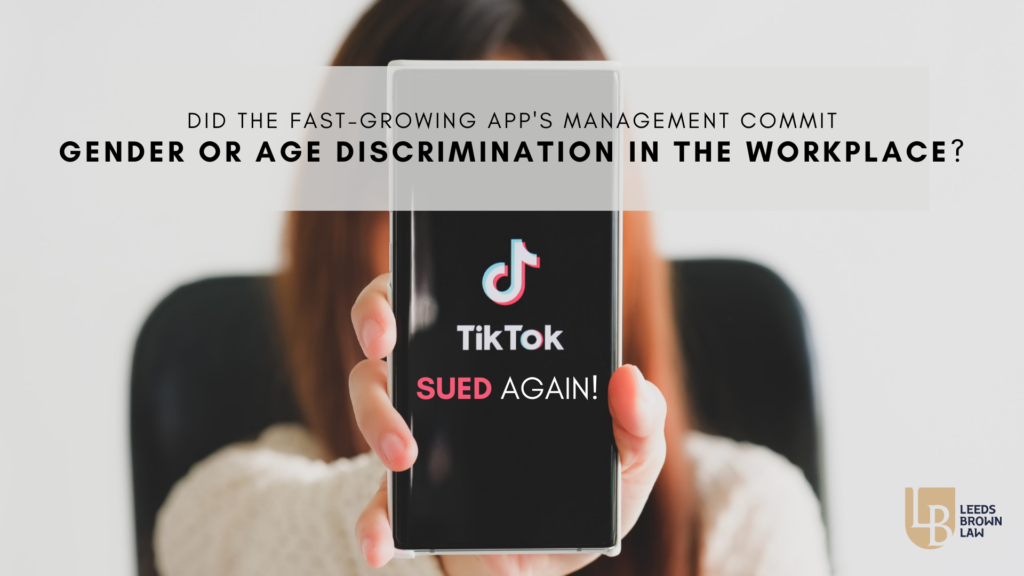A high-achieving leader in the advertising and marketing industry joins a company that is about to take off in a way that the world hasn’t quite seen before. It is December 2019, months before the COVID-19 pandemic will change the world in many ways, and the leader is Katie Ellen Puris, and the company is TikTok. Its app would explode in popularity during the pandemic, contending with YouTube and Instagram for the most-used by Americans of every background. With the help of age discrimination lawyers, TikTok is now being sued by its former Managing Director, the leader of its efforts to market TikTok as a way for U.S. businesses to find new customers, build brand identities, and announce new products and services to the world.
Ms. Puris alleges that after repeated praise for her work building TikTok’s advertising business, she was placed on an internal “kill list,†suddenly saw her performance reviews downgraded from excellent to marginal, and fell victim to stereotypes and demeaning statements relating to her age (not young enough) and her gender (an overly aggressive woman).
Employees of a company or government agency, and even high-level executives at one, can bring lawsuits for their lost wages and benefits (damages) and reinstatement or appropriate promotions, leave time, performance reviews, or transfers (injunctive relief). These lawsuits arise under a variety of laws, including those protecting the civil rights of employees, those about discrimination in contracts or government action, and those about human rights and protected groups in the workplace. Oftentimes, executives who are fired or denied favorable posts due to discriminatory assumptions or policies seek their rightful positions back (reinstatement), any salary and benefits they lost after they were fired or forced to quit by intolerable treatment (back pay), the salary and benefits including stock awards that they would have earned in the years after their lawsuit is filed if the relationship with their supervisors is too far damaged (front pay), and remedial programs requiring their employer or supervisors to adopt and oversee policies and practices to halt further discrimination in the workplace.
In 2023, TikTok was sued by two Black employees in its ad policy and business development offices, respectively, who alleged a culture of silence and retaliation for complaints about being treated differently in connection with race. That allegation was filed as a “pattern or practice charge†with the New York office of the U.S. Equal Employment Opportunity Commission. The employees alleged that there were other Black, Hispanic, Asian, or Native American workers who suffered similarly from negative action or warnings of forthcoming negative action after they requested assistance dealing with discrimination, or ending it.
The new case was filed in New York City federal court with the help of workplace discrimination and age discrimination law firms. In legal circles, this is known as the Southern District of New York when a federal lawsuit is involved.
Federal employment laws often give workers a choice of several places in which their lawsuits may be filed. The federal law governing race and gender discrimination in employment, Title VII, allows complaints to be filed in any federal district court in the state in which the discrimination or retaliation happened, the part of the state in which the human resources files for the alleged pattern or act of discrimination or retaliation are stored and administered, or in the part of the state in which the employee would have worked had they not been discriminated against. If none of these places are ones in which the employer has some presence, then an employee may bring suit in the federal court for the part of the state in which it has a “principal office.â€
Sometimes employers argue that, although they were sued in the right place, they were sued too early or too late in time, or that there is not enough evidence of their intent to discriminate or retaliate to let the lawsuit go forward. In many instances, the employee or his or her workplace discrimination lawyer will respond that a presumption or finding of discrimination may result if the employer was aware of employee’s race, gender, sexual orientation, age, color, national origin, or other protected characteristic, but treated the employee differently and less favorably than other similarly situated employees who had a different set of identity characteristics (younger or male in the first TikTok case mentioned above, or white in the other one). Whether the employer had a legitimate reason to fire an employee or treat him or her differently is often resolved with the aid of document discovery, depositions, trials or motion procedures, or other mechanisms that go beyond an employer’s pure denials.
In terms of timing, the time to sue may often be extended until the last discriminatory or retaliatory act out of a larger long-term pattern or trend, or until six to 10 months after the last such act, depending on the circumstances. And it is not too early to sue simply because an employee has not been terminated yet, or has not been found to have discriminated against by the EEOC, if for example the employee has been forced to resign or stay away from work, or the EEOC has issued a right to sue letter.
Next Steps
Workers who have been discriminated against, suffered a hostile or abusive environment at work, or have been denied a job or a promotion may particularly benefit from pursuing legal action with the aid of an experienced workplace discrimination lawyer. A free consultation can help you understand your rights and take action to protect them, including by contacting human resources or the government.

